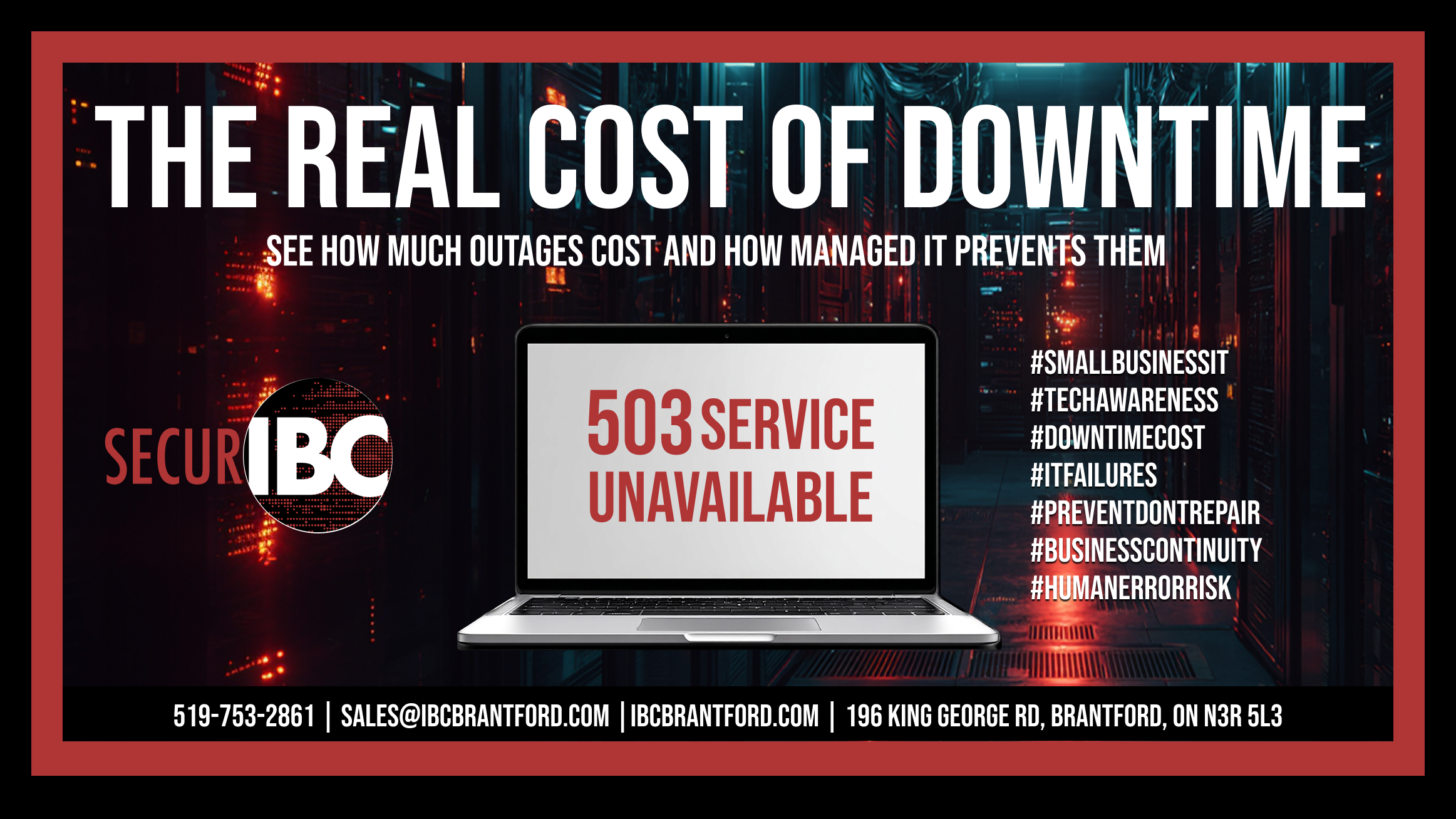Without managed IT services in Southwestern Ontario keeping your business technology on track, it’s easy to find yourself in a risky position, with your data and system open to vulnerabilities and cyber-crime attacks. Utilizing outdated information technology can pose several risks and challenges for your business, including efficiency, security, competitiveness, and customer satisfaction.
Read on for additional insight into the key risks associated with using outdated IT systems:
- Security Vulnerabilities:
When your Ontario business utilizes outdated IT software and hardware, it creates conditions that make your business much more susceptible to security breaches and cyberattacks. Without regularly maintained and managed technology in place, businesses may lack the latest security patches and updates, making it easier for hackers to exploit known vulnerabilities.
- Data Loss and Recovery:
Outdated systems often don’t have robust backup and recovery mechanisms in place to keep your data secure. This can lead to data loss in case of system failures or cyberattacks, resulting in downtime and potential financial losses for your Ontario business.
- Reduced Productivity:
Older technology also tends to be slower and less efficient, often leading to decreased employee productivity and increased frustration. This can result in missed opportunities, a decrease in output, and higher associated operational costs.
- Incompatibility:
Outdated technology systems may not be compatible with modern software and applications, limiting your small-to-medium business’s ability to use the latest tools, maintain the utmost security, and collaborate effectively and as professionally with partners and customers.
- Compliance Issues:
Many industries have regulatory requirements related to data protection and security. Outdated systems may not be compliant with these regulations, exposing the business to legal and financial risks.
- Increased Maintenance Costs:
As technology becomes older, maintenance and recovery costs tend to rise. Finding replacement parts, lost data and qualified technicians can become more challenging and expensive. Don’t run the risk!
- Competitive Disadvantage:
Ontario businesses using outdated technology may struggle to keep up with competitors who leverage newer, more efficient systems. They may lose market share and customer trust as a result.
- Limited Scalability:
Keep up with the times! Outdated systems may not be easily scalable to accommodate Ontario business growth. This can hinder expansion and flexibility, making it difficult to adapt to changing market conditions. As technology advances, hardware and software that are outdated become obsolete, making it increasingly difficult to find support, updates, and replacement parts.
- Employee Frustration and Turnover:
Employees who are forced to work with outdated technology may become frustrated and less motivated. This can lead to higher turnover rates and recruitment challenges, creating hurdles for your business growth plans.
- Customer Dissatisfaction:
Customers expect Southwestern Ontario businesses to provide efficient and secure services. Outdated technology can result in service interruptions, slow response times, and security breaches, leading to customer dissatisfaction and loss of trust.
- Legacy System Dependencies:
Transitioning away from outdated systems can be complex, especially if your Ontario business has become heavily dependent on them. This can result in high migration costs, business disruptions, and the need for intensive staff training to catch staff up-to-date and implement solid online safety protocols.





